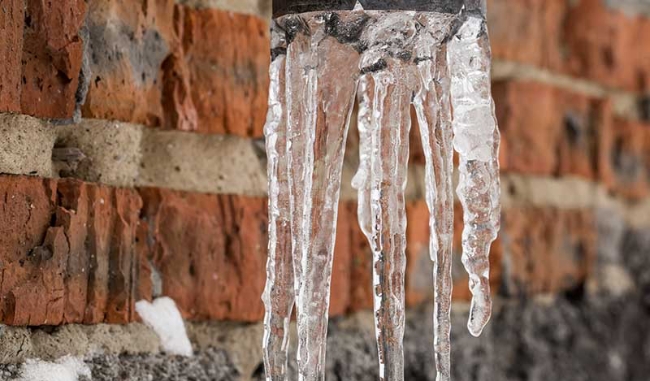Avoid Frozen Plumbing in Cold Weather: Pro Tips
Avoid Frozen Plumbing in Cold Weather: Pro Tips
Blog Article
On this page below you might get additional superb data involving Helpful Tips to Prevent Frozen Pipes this Winter.

Winter can ruin your plumbing, specifically by freezing pipes. Below's exactly how to stop it from taking place and what to do if it does.
Introduction
As temperatures decrease, the threat of icy pipelines rises, potentially causing expensive fixings and water damage. Recognizing exactly how to stop icy pipes is critical for house owners in cold environments.
Understanding Frozen Pipes
What triggers pipes to freeze?
Pipes ice up when subjected to temperature levels listed below 32 ° F (0 ° C) for expanded periods. As water inside the pipelines freezes, it broadens, putting pressure on the pipe walls and potentially triggering them to rupture.
Risks and damages
Frozen pipelines can lead to supply of water interruptions, home damage, and expensive fixings. Ruptured pipes can flood homes and create substantial structural damage.
Indicators of Frozen Pipeline
Identifying icy pipes early can stop them from rupturing.
How to recognize frozen pipelines
Search for lowered water flow from taps, unusual smells or noises from pipes, and noticeable frost on subjected pipelines.
Prevention Tips
Protecting at risk pipes
Cover pipes in insulation sleeves or make use of heat tape to secure them from freezing temperature levels. Focus on pipes in unheated or outside locations of the home.
Home heating techniques
Keep interior rooms sufficiently warmed, specifically locations with pipes. Open cabinet doors to permit cozy air to distribute around pipes under sinks.
Shielding Exterior Plumbing
Yard pipes and outside taps
Detach and drain yard hose pipes before winter months. Install frost-proof faucets or cover exterior faucets with protected caps.
What to Do If Your Pipes Freeze
Immediate activities to take
If you believe icy pipes, keep taps open up to relieve stress as the ice thaws. Make use of a hairdryer or towels taken in hot water to thaw pipelines gradually.
Long-Term Solutions
Structural modifications
Take into consideration rerouting pipelines far from outside wall surfaces or unheated locations. Add additional insulation to attic rooms, basements, and crawl spaces.
Updating insulation
Buy high-quality insulation for pipes, attic rooms, and walls. Appropriate insulation aids maintain constant temperature levels and decreases the threat of icy pipes.
Final thought
Protecting against frozen pipes needs positive actions and fast responses. By comprehending the causes, indications, and safety nets, home owners can shield their pipes throughout winter.
5 Ways to Prevent Frozen Pipes
Drain Outdoor Faucets and Disconnect Hoses
First, close the shut-off valve that controls the flow of water in the pipe to your outdoor faucet. Then, head outside to disconnect and drain your hose and open the outdoor faucet to allow the water to completely drain out of the line. Turn off the faucet when done. Finally, head back to the shut-off valve and drain the remaining water inside the pipe into a bucket or container. Additionally, if you have a home irrigation system, you should consider hiring an expert to clear the system of water each year.
Insulate Pipes
One of the best and most cost-effective methods for preventing frozen water pipes is to wrap your pipes with insulation. This is especially important for areas in your home that aren’t exposed to heat, such as an attic. We suggest using foam sleeves, which can typically be found at your local hardware store.
Keep Heat Running at 65
Your pipes are located inside your walls, and the temperature there is much colder than the rest of the house. To prevent your pipes from freezing, The Insurance Information Institute suggests that you keep your home heated to at least 65 degrees, even when traveling. You may want to invest in smart devices that can keep an eye on the temperature in your home while you’re away.
Leave Water Dripping
Moving water — even a small trickle — can prevent ice from forming inside your pipes. When freezing temps are imminent, start a drip of water from all faucets that serve exposed pipes. Leaving a few faucets running will also help relieve pressure inside the pipes and help prevent a rupture if the water inside freezes.
Open Cupboard Doors
Warm your kitchen and bathroom pipes by opening cupboards and vanities. You should also leave your interior doors ajar to help warm air circulate evenly throughout your home.

I found that blog posting on Helpful Tips to Prevent Frozen Pipes this Winter when doing a search on the internet. Are you aware of someone else who is in the market for the niche? Feel free to promote it. Thank you for going through it.
Suggested Site Report this page